Start a children’s clothing business $200 USD in the UK
While experience and training certainly help, you don’t need a degree from a fashion college to start your own clothing business.
We are K-Embroidery – a factory that produces children’s smocking clothing products and we have cooperated with many stores of different sizes and also business store owners with capital of just under $200. And they are still successful and even grow faster than stores with large investments. Why is that possible? Because they have clear goals and strategies and they follow them to the end.
What you need is motivation, vision and processes in place to grow.
The following tips will help you put a plan together. So roll up your sleeves and learn how to start a clothing business.
Research and Identify Your Niche
When starting a children’s clothing business in the UK, it is important to research and identify your niche. That means you need to dive deep into the market landscape, understand your target audience and focus on your unique point, and from there you can carve out a specialized space in the industry.
And this step is cost-free, you can find information on the Internet. All expenses for this step are not necessary if your capital is only $200.
Conduct market research
Of course, before trying anything new, you need to do some research first. This means finding out what people like to wear and whether they are willing to buy what you offer.
If you’re starting out with very little money, like $200, it’s risky to spend too much on clothes that might not sell.
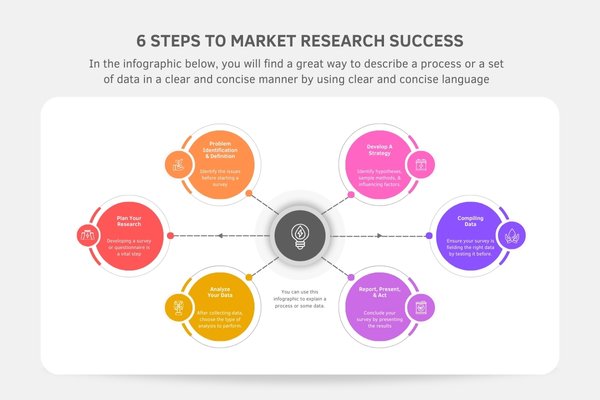
And the same goes for selling children’s clothing, you will need to analyze the UK children’s clothing market (including size, growth rate and key competitors); research market trends (such as changing fashion preferences, popular styles, and upcoming new design forecasts); Identify potential market gaps or underserved segments where you can deliver unique value.
And the information you need can be found in market reports and industry publications in the UK. However, there will be some reports that require you to pay to view details, this is up to you.
Find your niche
The clothing industry is vast and consists of thousands of related companies. If you’re reading this article, you probably already have some ideas about the specific field that interests you.
However, it’s important to truly specialize to differentiate your business from others.
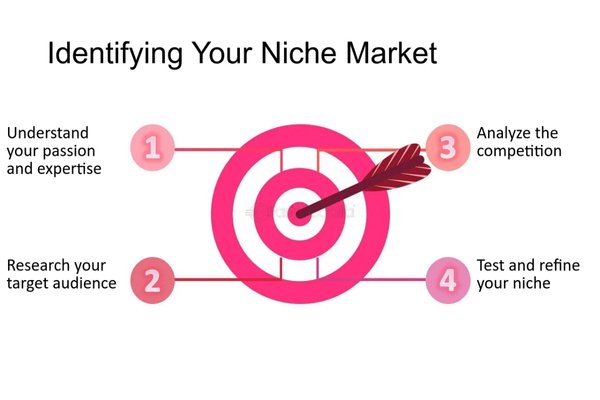
Let’s say you’re looking to start a children’s clothing business. In fact, there are many companies doing similar things.
Perhaps you want to design children’s outerwear. What makes your brand different?
- Is it the quality of the materials?
- Perhaps it’s a specific design (predetermining the style you want to achieve)?
- Maybe it’s the use of 100% cotton?
- Do your products have smocking elements that make them more special?
- Who is going to be your target audience?
- Or you can get the price of clothes lower than the market. According to the UK Childrenswear Market Report 2023, 71% of adults who bought schoolwear agree that price is the most important factor. So this can also be a way to make your brand stand out from the crowd
And you need to have the answer to these questions before heading to the next step.
Create a business plan and goals
Your business plan is a blueprint for building your fashion company. It defines what the company does, explains how the company will make money and how it will operate.
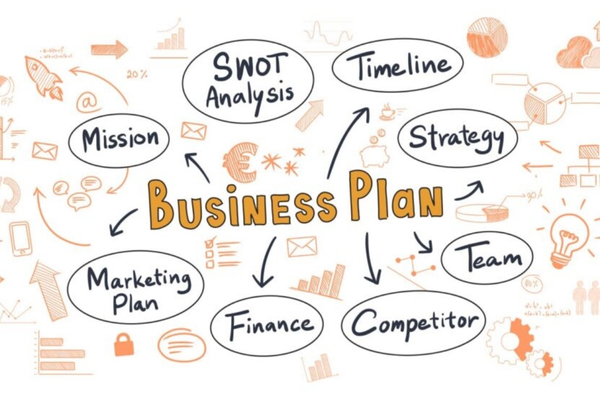
A basic plan will include:
- Executive summary: Provides an overview of your business, its mission, target market, competitive advantage, and financial projections.
- Product or service line: Provide detailed information about your products or services and their features, benefits, and competitive advantages.
- Marketing and sales strategy: Describe your marketing and sales approach to reach and attract customers and outline your pricing strategy, distribution channels, and promotional activities. We will talk more about it in the following section.
- Financial projections: Present financial forecasts and projections, including income statements, balance sheets, and cash flow statements.
- Business license: Of course, you know about this and these will be procedures that will give you a lot of headaches.
You can create a SWOT model to further research the market, it will include S (Strength – Your Strengths), W (Weakness – Your Weaknesses), O (Opportunity – Market Opportunities) and T (Threats – Market risks)
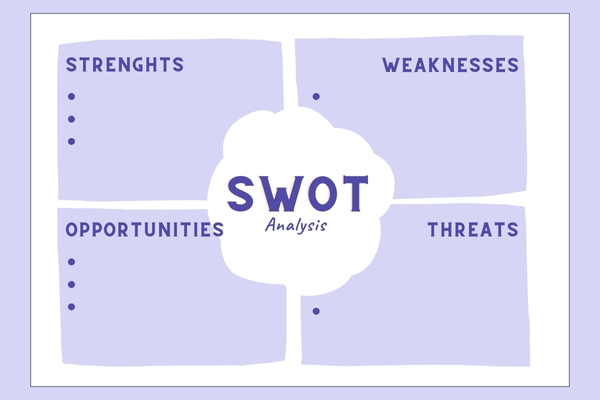
Your business plan is like a flexible blueprint that evolves with time. You should keep updating and tweaking it as needed to adapt to changes and steer your business in the right direction.
Research and test the waters
Let’s say you want to start a business printing children’s T-shirts in a playful style. Instead of purchasing expensive printing equipment upfront, start small. Get a few designs printed by someone else.
Then try selling them online, at local markets, or at specialty stores. This way, you can gauge whether people are interested in your product before investing more.
Design and manufacture the product
If you wish to create your own clothing line, you will likely need to design and manufacture the products yourself.
You may already have a background in fashion design, but even if you don’t, you can still get clothes designed and produced by organizing and outsourcing tasks as needed.

Here are some steps you need to take:
- Find inspiration for product designs: By referencing designs and ideas from abroad or gathering inspiration using mobile applications like Pinterest, Canva, etc.
- Design the items: You can do it yourself or have someone else create product sketches for you (by hiring an employee or hiring a freelance designer).
- Create a template: This is a guide for manufacturers and contains detailed information such as size, material and fabric.
- Source fabric: By going to a wholesaler or making your own.
- Get some samples: It’s usually quicker and easier (if more expensive) to make them in the UK so you can talk directly to the manufacturer.
- Find a manufacturer: They often require minimum order quantities. It’s usually cheaper to do this overseas, although you’ll have to wait longer for it to arrive and may encounter language barriers and time zone issues.
Promote your brand and do the Marketing
Marketing
People won’t know about your product or service if you don’t do marketing activities to make it stand out from competitors.
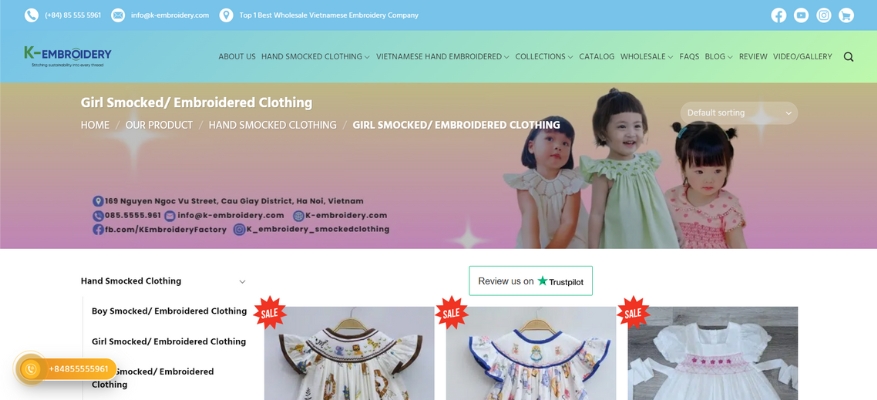
Different marketing activities or strategies may be more or less suitable depending on the product you intend to sell, but you can often use the following methods:
- A website
- Social media (you’ll need to be good at taking product photos and creating content)
- Advertising (online and offline)
- Influencers
- In-store advertising and promotions
Branding promotion
While product quality remains the most important factor, we cannot underestimate the importance of branding.
Building a fashion brand involves more than just your company name and logo. It also includes your choice of colors, typography for text, tone in your written communications, and much more. Additionally, coming up with a catchy slogan can help your brand stick in customers’ minds.
It’s all about creating a unique identity. People love brands with inspiring or easily understandable stories behind them.

Let’s say you’re starting a children’s smocked clothing business. You might opt for a simple logo that clearly indicates your focus on smocked children’s clothing.
Then, you’ll need to choose the colors, styles, and color palette for your website and clothing packaging. It should reflect a distinct style and be consistent with your products.
Next is deciding on the lovely-tiny models to showcase your products. If possible, you could save costs by using a relative’s child.
Afterward, you’ll want to develop your brand story. Think of a narrative behind your brand. For example, if you’re selling children’s clothing, your story could be about creating a clothing set as a birthday gift for your granddaughter, realizing its trendy appeal, and deciding to turn it into a business idea.
By emphasizing this story, you create a brand narrative that resonates with your target audience.
Analysis your finance and your Sales strategy
Calculate your finances
Starting a fashion business often requires a significant initial investment, especially if you plan to make your own clothes and sell them. But for just $200, you’ll need to minimize costs as much as possible.
Some important costs when doing business in smoking children’s clothing, such as store rent (or money to open a store on an e-commerce platform), labor hire, production or product import costs , printing money, etc. And all these basic costs can wipe out $200 of your capital.

Review your business plan and add up all the potential costs you may encounter in your first year of business. Then make a plan to pay for it.
You can:
- Search for grants, loans or investments.
- Find freelance work and work in your spare time to earn extra money.
- Provide services (such as sewing, repairing clothes) then reinvest in product production.
Managing finances in the fashion business can be difficult, but don’t let that stop you from realizing your small business dreams.
Research conducted by Sage Research in 2020 found that 46% of people wanting to start a business think being good with numbers is an important trait.
But the reality is that only 40% of business owners think this is important. It’s important that you be flexible and have a problem-solving mindset, because business doesn’t always go according to plan.
Sale strategy
After calculating all possible costs, you will definitely need a sales strategy to get your capital back and make a profit.
This will include main tasks such as:
- Establish a strong marketing and presence to gain more customers
- Build relationships with partners (e.g. product suppliers, landlords, etc.)

- Provide good customer service
- Offer preferential policies and establish loyal customer relationships
- Listen to customer reviews and feedback.
Consider legal factors
Another crucial aspect you need to pay special attention to is the legal requirements. Naturally, you can’t start a business operation without a business license, and this is just the beginning.
Furthermore, there are various other factors of legal that you also need to get prepared, such as:
- Legal structure: Decide whether you will be a sole trader (where you and the business are the same legal entity), a limited liability company (where the business is separate from you), or a partnership (established with one or more people).
- Company registration: Let HMRC know you’re forming a company. You’ll need to do this if you’re trading as a limited liability company.
- Trademark registration to ‘protect’ it: If you become a limited liability company, this is done when you register the company, and it will protect that name. Technically, you can also do this as a sole trader. Essentially, you’ll have to pay £12 to set up a limited liability company and ‘reserve’ that name.
- Intellectual property registration: If you’re designing a new clothing line or have a logo, you’ll want to register them to prevent others from copying your ideas. Depending on the business, you may want to register for patents, trademarks, designs, or copyrights.
- Submitting your accounts to HMRC: Depending on the legal structure you choose, you’ll need to file accounts and pay taxes by specific deadlines.
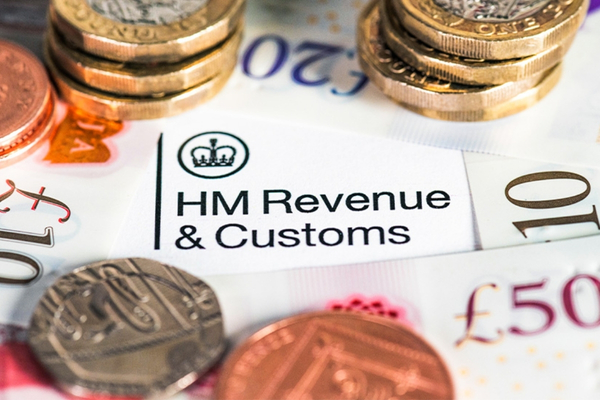
- Business banking: You should open a business bank account where you manage all income and expenses – and separate it from your personal spending account.
- Cash flow tracking: This lets you know if you’re spending more than you’re earning. Once again, accounting software can assist here.
- Record-keeping: You have a legal obligation to keep records of invoices, expenses, and bank statements.
- Hiring employees: If you’re hiring people, you’ll need to register with HMRC as an employer and comply with various employment rules. You’ll need to address payroll – using payroll software can help you comply and automate your processes.
- Compliance: You’ll need to comply with all relevant industry standards (e.g., you can only market materials as ‘fair trade’ or ‘organic’ if they have passed certain standard checks. Or if you’re manufacturing clothes, you may need to comply with REACH standards).
Yeah, it is a lot, I know. But don’t worry, you don’t have to do them all in one day.
Find your suppliers
Finding a reliable supplier is like finding your soulmate, which is extremely important in the fashion industry, especially if you plan to produce garments or have goods delivered to your store.
Finding good suppliers can be challenging and often requires you to work with companies based abroad.
Depending on what you are trying to achieve, it can be helpful to get quotes from several suppliers. Also, the more details you can give them, the better (for garment manufacturing, samples are best, but detailed drawings will help).
And if you want to start a children’s clothing business, perhaps K-Embroidery can help you. We are a leading reputable hand-smocking children’s clothing factory in Vietnam and have a lot of experience cooperating with partners from developed countries such as England, America, Japan, … So If you have a business idea and are looking for a supplier, contact our Sales team at WhatsApp: +84 85 555 5961.

Don’t worry, our consulting service is completely free and won’t cost you any of your $200.
Enter the market and do your best
Once your product or service is ready, you’ll need a go-to-market (GTM) strategy that explains how you’ll actually sell your clothes or provide your service.
And this is when you need to implement marketing and sales strategies as clearly explained above.
Let’s say you’re considering starting a clothing business. This is a service company so you can easily get started with a low-cost, word-of-mouth marketing strategy. You can then increase your presence using social media – one idea might be to create content explaining how to mend common clothes as a way of promoting your brand.

You may feel very happy when you receive your first money from your business.
However, fashion trends are always changing and there is always a demand for new garments and designs according to the seasons and changing tastes. Therefore, you should not be subjective and rest on your laurels. You will always need to continuously update both domestic and international trends to avoid falling too far behind.
Conclusion
The above knowledge is a collection of experiences and startup stories of K-Embroidery’s partners. Each entrepreneur will have a different starting point, however, they all have the same motif for success: patience.
Entering the children’s clothing market can be difficult at first, but with detailed planning and preparation for all possible bad situations, you will always be in good hands. proactive position.
And good luck to you.


